Key takeaways:
- Understanding funding sources requires aligning your project’s goals with the priorities of various funders, including government agencies, private foundations, and corporate entities.
- Networking and building relationships can significantly enhance funding opportunities, as connections often lead to insights and unexpected collaborations.
- Crafting an effective funding proposal involves clear communication of your project’s vision, tailoring the proposal to the funder’s interests, and providing a well-justified budget.
- Lessons learned from engagement with funders include the importance of personalization, active listening, and resilience in response to rejection.
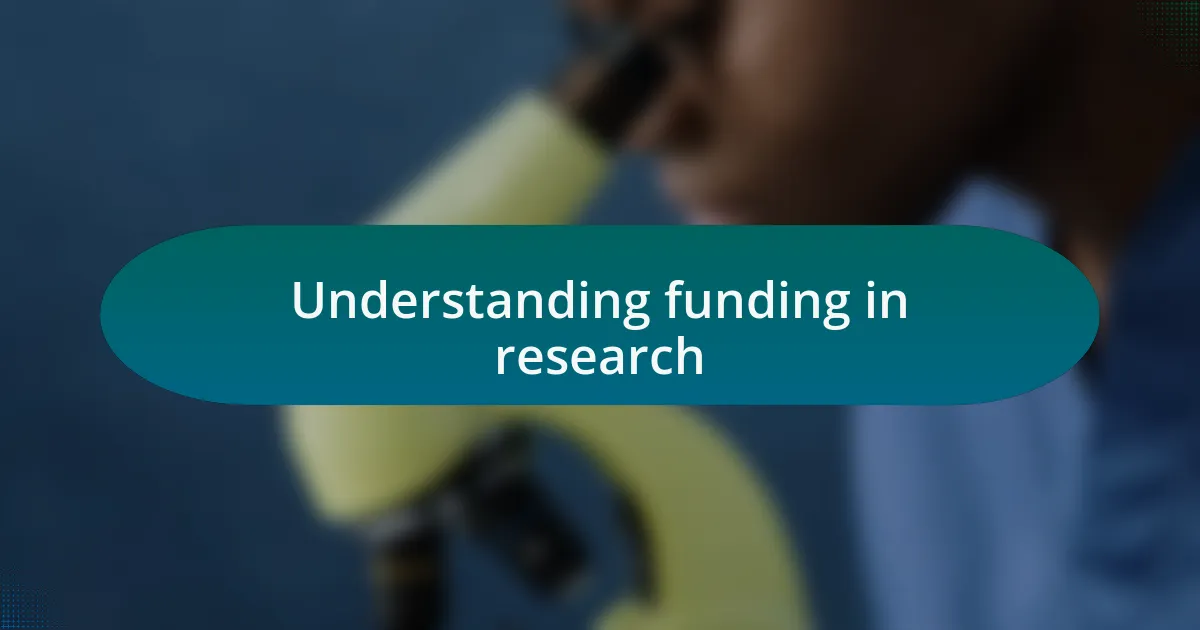
Understanding funding in research
Understanding funding in research can often feel like navigating a maze. From my own experience, I’ve encountered countless funding sources, each with its unique criteria and expectations. Have you ever felt overwhelmed trying to determine which grants fit your project best? It’s not just about money; it’s about finding a match that resonates with your research goals.
I remember when I first applied for a research grant. My heart raced as I reviewed the funding application, feeling both excitement and trepidation. I realized early on that understanding the intricacies of funding wasn’t just a bureaucratic task—it was integral to the success of my project. It made me think: what story does my research tell, and how can I effectively communicate its value to potential funders?
Diving deeper into funding, I discovered that successful proposals often showcase not just the research but the broader impact it could have. Funders want to know how their investment will lead to tangible benefits. Reflecting on my past pitches, I learned that conveying passion and a clear vision was just as essential as the statistics and methodologies I included. In the end, it’s about establishing a connection, isn’t it?
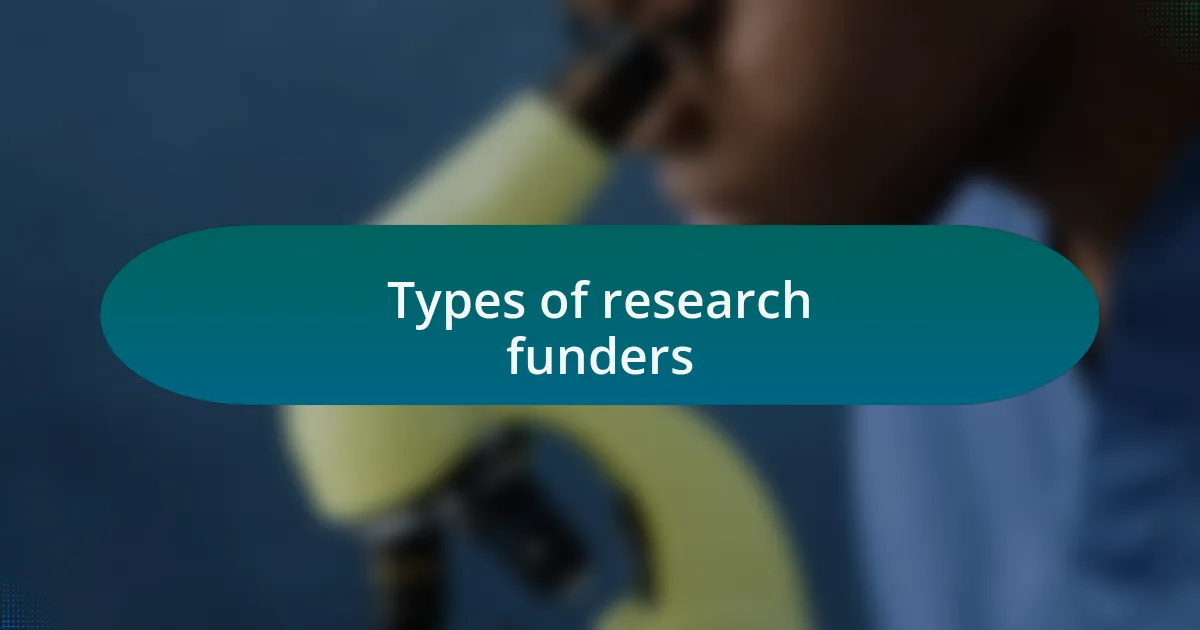
Types of research funders
Understanding the various types of research funders is crucial for aligning your project’s goals with their priorities. Government agencies, for example, often provide grants aimed at addressing national interests, like health or environmental issues. I remember applying for a federal grant focused on renewable energies; navigating their extensive requirements taught me just how aligned their funding was with societal needs.
Then, there are private foundations and non-profit organizations that aim to support specific causes or fields of study. I once presented a proposal to a foundation dedicated to advancing women’s health. Their passion for the topic was palpable, and it motivated me to tailor my presentation closely to their mission. Have you thought about how the values of a foundation could enhance your project’s appeal?
Lastly, corporate funders tend to have a more commercial focus, often looking for research that can directly contribute to product development or market growth. I had the opportunity to collaborate with a tech company interested in my AI research. Their perspective on potential applications helped refine my work and made the funding conversation feel less transactional and more like a partnership. It’s fascinating how different funders can shape the trajectory of research, isn’t it?

Importance of networking for funding
Building a strong network is essential in the quest for funding. I’ve found that relationships often open doors that grants and applications alone cannot. For instance, during a conference, I chatted with a potential funder over coffee, which led to an unexpected partnership. It’s remarkable how casual conversations can lead to meaningful collaborations, isn’t it?
Networking also enhances credibility; when you connect with professionals in your field, you show potential funders that you’re well-regarded and established. I once participated in a panel discussion, and afterward, several attendees reached out to discuss funding opportunities that weren’t on my radar. Their enthusiasm and support showed the power of being seen and heard in a community. Have you considered how your presence at events can amplify your chances of securing funding?
Moreover, strengthening your network allows you to gain insights into funding trends and preferences. I remember attending a workshop where experienced researchers shared their funding strategies, which gave me a significant advantage in tailoring my proposals. It’s interesting how peer knowledge can shape our understanding of what funders are looking for, don’t you think?
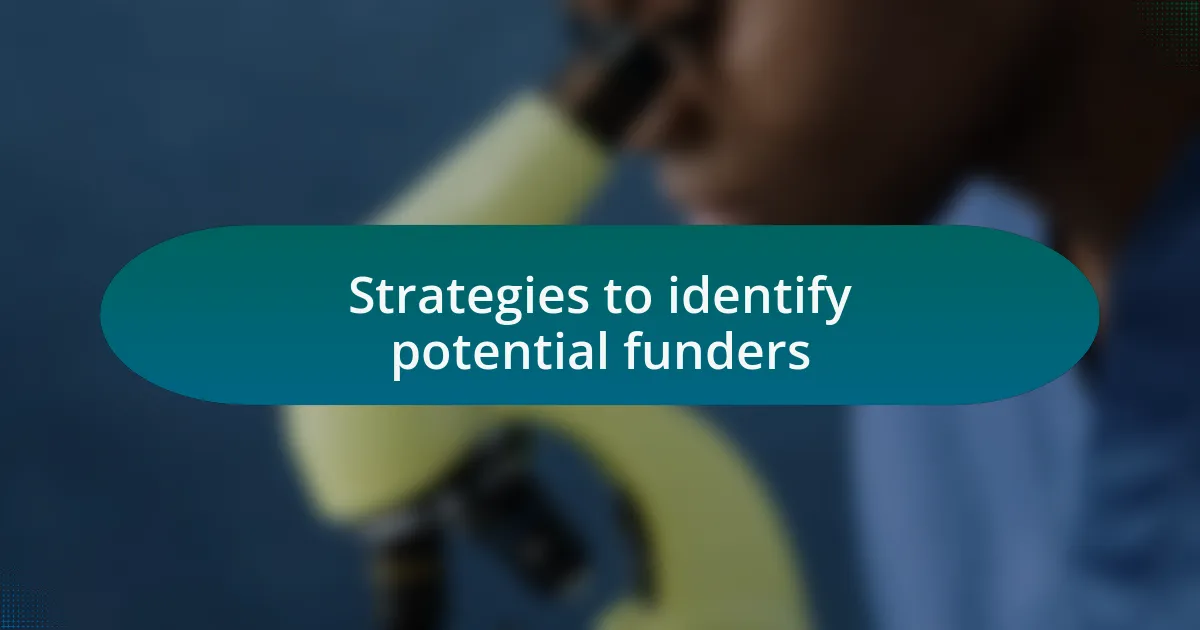
Strategies to identify potential funders
Identifying potential funders starts with thorough research. I typically dedicate time to explore online databases and funding platforms, where various grants and their respective funders are listed. For instance, I discovered a grant opportunity tailored for my research field simply by browsing a specialized database; it was a game changer I hadn’t anticipated. Have you ever considered how a few hours of digging online could yield substantial funding leads?
Another strategy I employ is to tap into social media and professional networks. Platforms like LinkedIn are goldmines for finding individuals and organizations that align with my research interests. One time, I came across a foundation’s profile while scrolling through my connections, and a quick message led to a fruitful dialogue about funding possibilities. This kind of serendipity highlights the unique connections we can make online, wouldn’t you agree?
Finally, engaging with academia and industry collaborations can be incredibly fruitful. Several funding opportunities I’ve encountered were direct outcomes of partnerships I nurtured during my time as a postdoctoral researcher. Collaborating with industry professionals on joint projects helped me unlock resources and funding sources I wouldn’t have known otherwise. Have you thought about how partnerships might amplify your project’s visibility to potential funders?
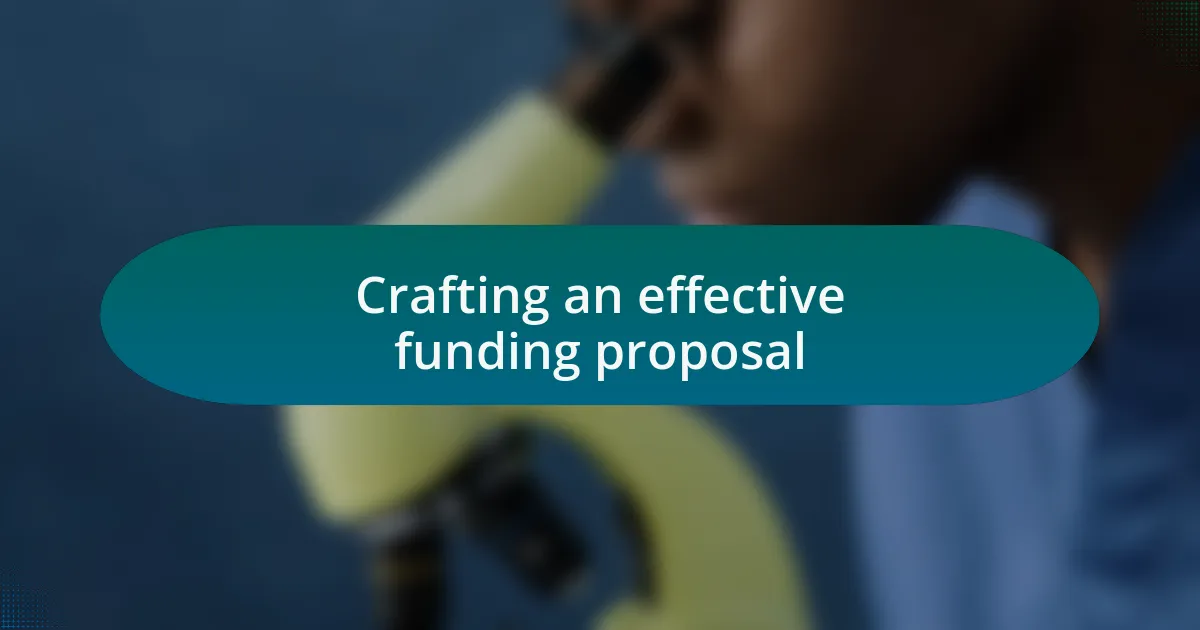
Crafting an effective funding proposal
Crafting an effective funding proposal hinges on the clarity of your project’s vision. I remember crafting a proposal that outlined not just the objectives, but also the potential impact of my research. This approach resonated with reviewers, as they could see the broader implications of my work. Have you ever noticed how a clear narrative can make complex ideas more accessible?
I find it crucial to tailor your proposal to the specific interests of the funder. During a past experience, I carefully aligned my project’s goals with the funder’s mission statement, emphasizing shared values. This attention to detail made my proposal stand out among others. Do you think personalizing your message might increase your chances of success?
Finally, I always make sure to include a robust budget justification. In one proposal, I highlighted how each dollar requested would directly contribute to the research objectives. This transparency not only demonstrated fiscal responsibility but also built trust with the funders. Have you ever considered how a well-articulated budget can enhance your overall proposal?
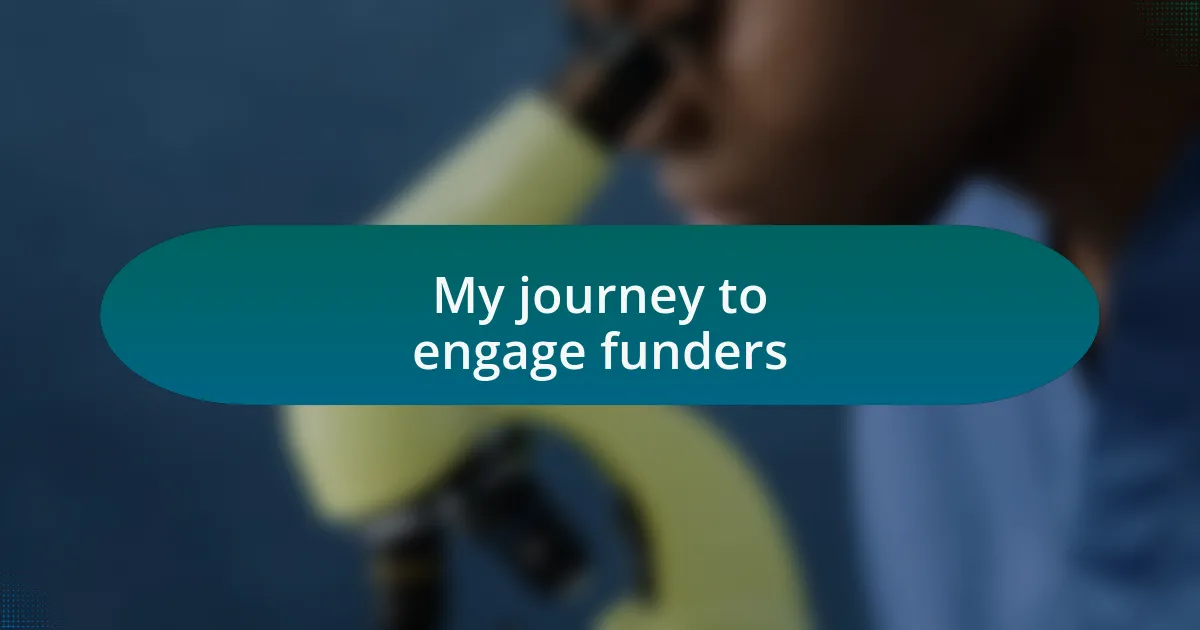
My journey to engage funders
Engaging potential funders has been a transformative journey for me. I vividly recall my first pitch meeting, where I fumbled through slides, feeling a mix of fear and excitement. It taught me the importance of being authentic—not just sharing data but also conveying my passion for the research. Have you ever had a moment where your enthusiasm was the key to connecting with someone?
As I honed my communication skills, I started to see funders as partners rather than just sources of money. I made it a point to follow up with personal thank-you notes and updates, sharing milestones of my research, which helped foster genuine relationships. I learned that this ongoing connection is as valuable as the initial funding request. How do you nurture relationships beyond the proposal stage?
Over time, I realized that storytelling could be my greatest tool. I incorporated real-world examples that illustrated the potential impact of my research, allowing funders to visualize the change their contributions could bring. One of my proudest moments was when a funder reached out to express how inspired they felt after our meeting. Do you believe that sharing stories can ignite a spark of interest and investment?

Lessons learned from my experience
Through my journey with potential funders, I learned that preparation goes beyond knowing my research inside out. I remember a time when I tailored my presentation to align with a funder’s interests, weaving in their past contributions. That attention to detail led to an unexpected rapport. Have you ever noticed how a little personalization can change the dynamic of a conversation?
Another lesson I embraced was the significance of listening. During one meeting, I became aware that by truly engaging with the funder’s concerns, I could adjust my approach in real-time. Their feedback turned my pitch from a monologue into a collaborative discussion, and it felt gratifying to build a conversation rather than just recite information. Isn’t it fascinating how active listening can transform a potential relationship?
Perhaps most importantly, I discovered the power of resilience. After facing several rejections, I reflected on the feedback I received and recalibrated my approach. Each “no” became an opportunity for growth. One moment stood out: after a particularly challenging rejection, I reached out for constructive feedback. That led to a valuable mentorship, reshaping my perspective on setbacks. How often do we recognize that setbacks can sometimes propel us toward new avenues?